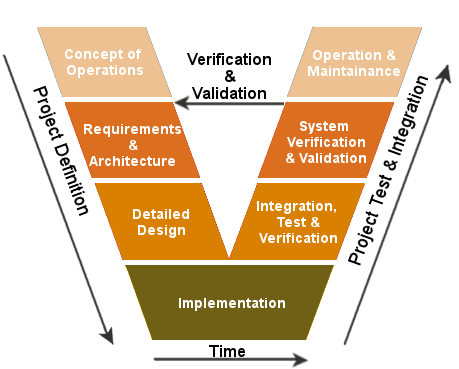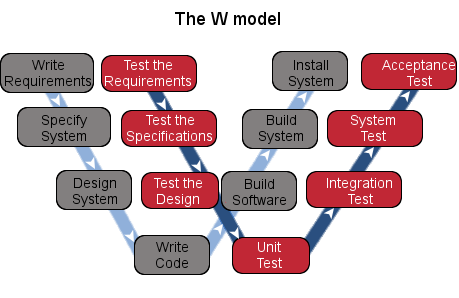

Testing is one of the most important means of software quality assurance. Each software development paradigm requires an appropriate test model. The various processes and methodologies that are selected for the development of a project based on its aims and goals are known as Software development models. These models define several stages of processes and the order in which they were executed. Software development process is also known as a Software Development Life Cycle (SDLC).
With the advancement in technology, it has now become extremely easy to find software development models of various kinds to suit different requirements. However, it is really necessary for a developer to opt for the appropriate software development model for their project, as it has an immensely great impact on the executed testing. The importance of the software development life cycle model increases furthermore because of the role it plays in defining the what, when and where of the planned testing. It also influences the regression testing and largely determines the test techniques that will be used by the developer while implementing the testing.
W-Model is one such software development model, designed to achieve various demands and requirements of a developer. It aims at covering all those aspects that are overlooked or skipped in the V Model of software development. Here is a critical analysis of W-Model to help you understand it thoroughly.

Introduced by Paul Herzlich in 1993, W-Model approach attempts to address and tackle the shortcomings of V-Model. Unlike the V-Model, which focuses on specific dynamic test stages, W-Model pays full attention on the development of products themselves. Moreover, it represents one-to-one relationship between the documents represented on the left side of the W and the tests represented on the right side of the W. In its most generic form, the W-Model presents a standard development lifecycle with every development stage mirrored by a test activity. On the left hand side, typically, the deliverables of a development activity is accompanied by a test activity “test the requirements” and so on.

The most important element of the W-Model approach is that it focuses specifically on the product risks and concentrates at the point where testing can be most effective. It ensures that the testing starts from the very first day of the project, which assists the team of developers to keep a track of defects from the initial stage as well as reduces rework in the later stages of development. W-Model is one of the best option for developers as it easily adjusts to their development requirements and provides expected results. Furthermore, the focus is not limited to functional requirements but is spread to technical design and architecture also.
Testing in the W-Model is executed in the early stages of development which allows the developers to discover defects in system specification and design as soon as possible. Early testing not only improves system analysis, but it also ensures that the design and defects found there are easily fixed in a cost effective manner. The testing techniques in the W-Model are divided into three types. From validating and verifying to crosschecking and fixing, all three of these techniques have various functions which are essential to the whole development process of the software. These testing techniques used in W-Model are:
Another major work of regression testing is to verify that the bugs and errors in the program are fixed properly and to check whether the newly added features have not been created during the problem in previous working version of the software.
In this type of testing there are a wide range of techniques available for evaluating executable software and systems. The traditional unit, integration, system and acceptance tests can make use of the functional test design and measurement techniques as well as the non-functional test techniques that are all available for use to address specific test objectives. Furthermore, the W-Model removes the artificial constraint of having the same number of dynamic test stages as development stages.
There are several advantages associated with W-Model. W-Model presents a standard development life-cycle with every development stage mirrored by a test activity. It is one such software development model which is designed to achieve various demands and requirements of a developer. The most beneficial element of W-Model is that is tackles all those aspects that are skipped in the V Model of software development. Mentioned below are some other advantages of W-Model.
Even though there are several advantages of W-Model, one can find few drawback or disadvantages while using this model of software development. To get a better understanding and to avoid such problems, here is a list of disadvantages of W-Model:
One of the most effective software development model, W-Model is a variant of the V-Model which aims at overcoming all the shortcoming in the latter. It is specifically focused on identifying product risks and concentrates on points where testing can be most effective. W-Model ensures that the testing starts from the very first day of the project, so that the developers can keep a track of defects from the initial stage of software development. Hence, W-Model makes sure that the end product is of best quality and has gone through proper evaluation, verification and validation before its release.
Advertisement: